Key takeaways
- Waves plugins simplify audio processing with intuitive controls, allowing for easier creativity and mixing.
- Effective mixing is essential for creating a balanced, polished sound that enhances the emotional impact of music.
- Organizing plugins and trusting your ears over visual metrics improves the mixing process and leads to more personalized results.
- Taking breaks and resetting plugins can help clarify decisions and troubleshoot issues, making the mixing experience more productive.
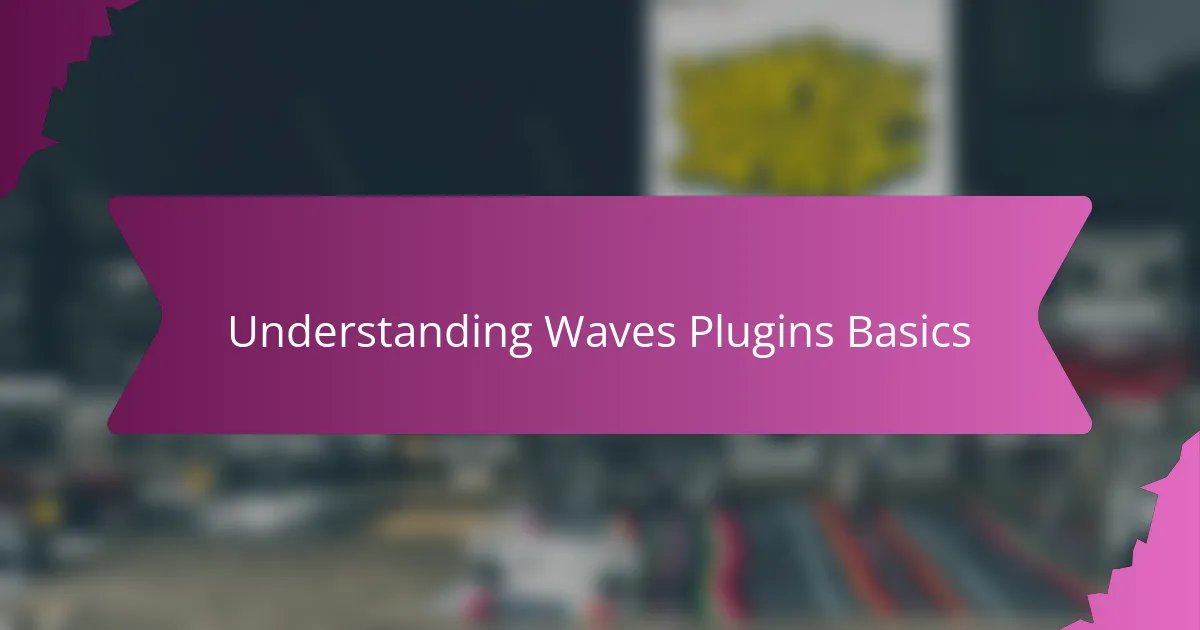
Understanding Waves Plugins Basics
When I first opened a Waves plugin, I was struck by how intuitive the interface felt, even if I wasn’t entirely sure what each knob did. I quickly realized that these plugins simplify complex audio processes, breaking them down into easy-to-understand controls like EQ, compression, and reverb. Have you ever felt overwhelmed by endless parameters? Waves plugins help cut through that noise, letting you focus on the sound rather than the technology.
One thing I appreciate about Waves is how their plugins are designed to feel familiar, regardless of whether you’re working on vocals, drums, or guitars. The consistent layout means I don’t have to start from scratch when switching between tools—a small detail that saved me so much time during mixing sessions. It’s like having a trusted toolkit where every tool fits perfectly in your hand.
Understanding the basics of Waves plugins also means recognizing their power to shape a mix creatively. At first, I used them mainly for corrective purposes, but as I grew more comfortable, I started experimenting with subtle distortion or unexpected delay effects. This journey taught me that mastering the basics is just the foundation—once you feel confident, the real fun in mixing begins.
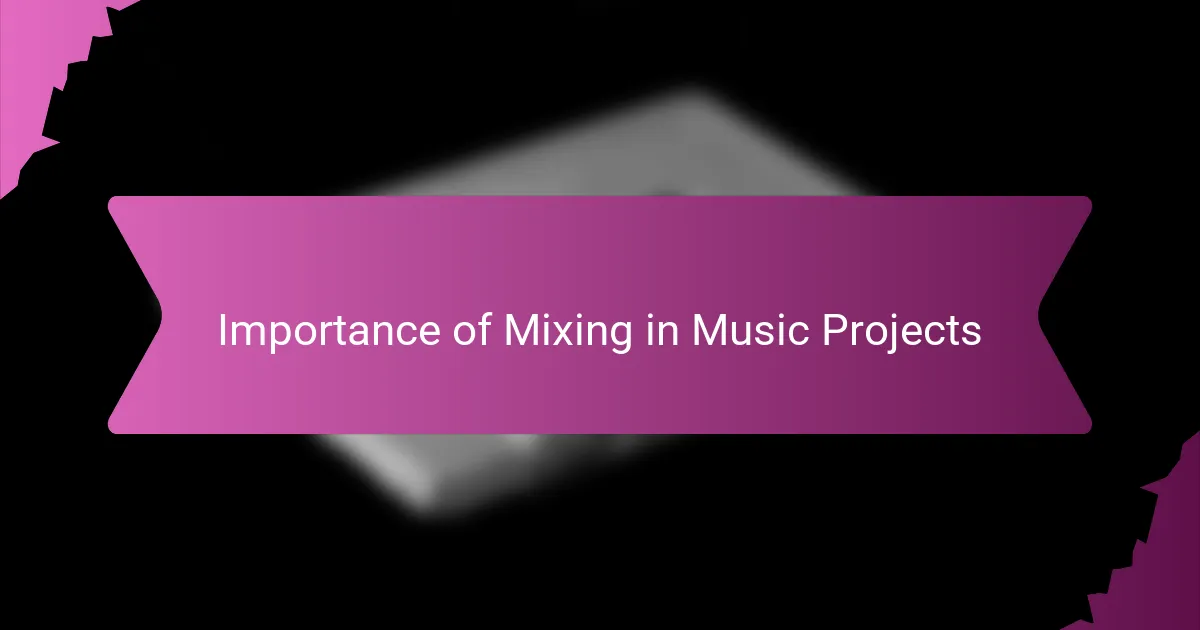
Importance of Mixing in Music Projects
Mixing is the heartbeat of any music project—it’s where all the individual elements come together to create a unified sound. I remember feeling lost in my early projects because the tracks sounded great alone, but when stacked together, something felt off. That’s when I realized how crucial mixing is to make everything sit perfectly in the sonic space.
Have you ever listened to a song and noticed how the vocals float clearly above the instruments, or how the bass fills in just enough without overpowering? That’s the magic mixing brings, balancing frequencies, volume, and effects to enhance emotion and clarity. Without a good mix, even the best performances can get buried in the final product.
For me, mixing became more than just a technical step—it turned into a creative playground. It’s the stage where mood and personality take shape. When I started really paying attention during mixing, my projects began sounding more polished and professional, and that feeling of bringing a song to life never gets old.
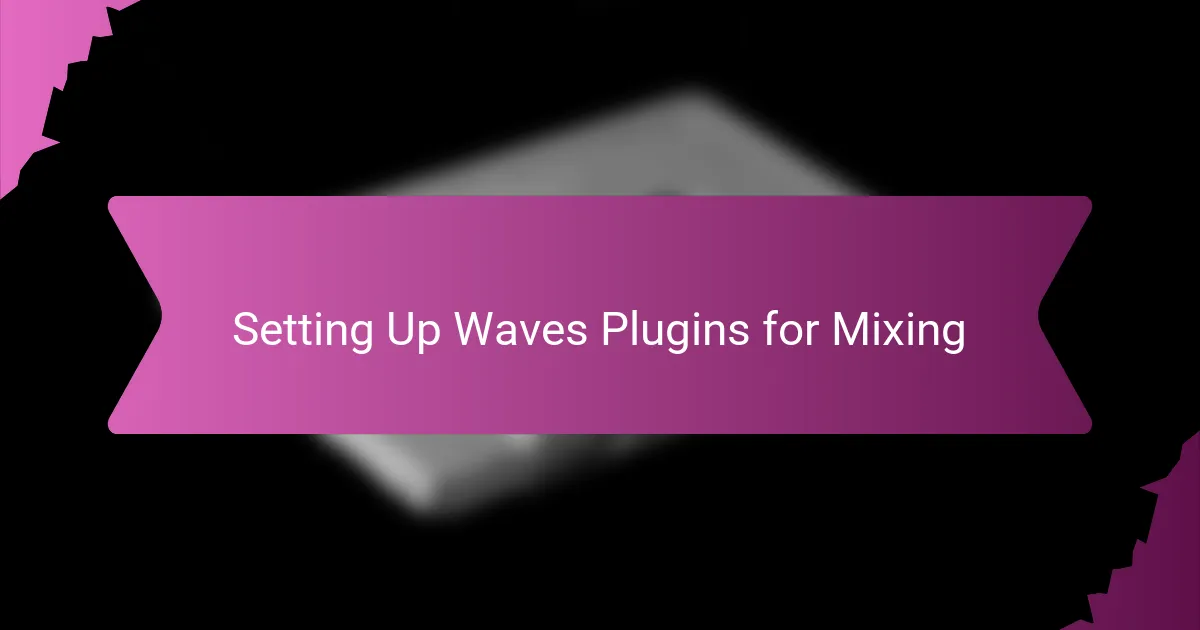
Setting Up Waves Plugins for Mixing
Getting started with setting up Waves plugins for mixing was a bit like assembling a new gadget for the first time—I had all these pieces in front of me, and I wasn’t quite sure how they’d fit together. What helped me was taking a moment to map out which plugins I wanted for each track’s role, like placing an EQ on the vocals and a compressor on the drums right from the outset. This approach gave me a clear roadmap rather than diving in blindly, which made the process feel less chaotic.
I also found that organizing my Waves plugins in a consistent order within my DAW helped me stay focused during mixing sessions. For example, I usually placed corrective plugins like de-essers and noise gates first, followed by tonal shaping tools like EQ and then dynamic processors like compressors. Having this predictable workflow made the mixing process smoother and less stressful, especially when juggling multiple tracks.
Have you ever noticed how small adjustments can suddenly bring a track to life? When setting up Waves plugins, I started with subtle settings instead of drastic changes, allowing me to fine-tune the sound gently. This patient approach not only preserved the natural character of the instruments but also gave me more control over the final blend, making the mix feel cohesive and polished.
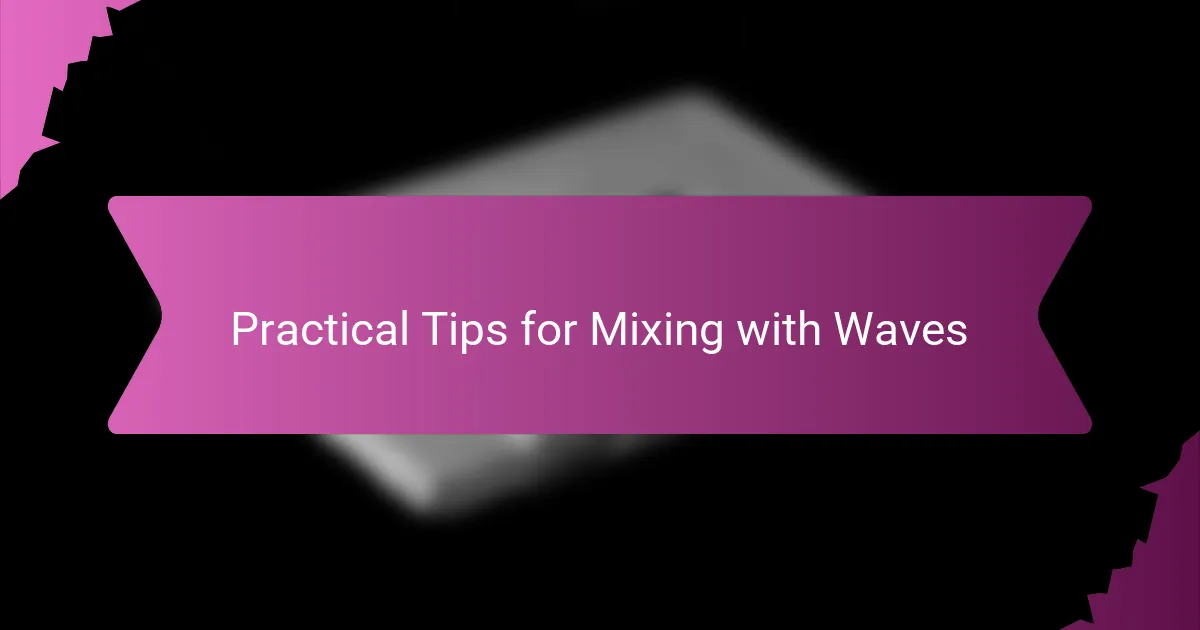
Practical Tips for Mixing with Waves
One practical tip I learned early on is to really trust your ears rather than just chasing numbers on the meters. Have you ever found yourself tweaking a plugin endlessly without hearing a real difference? I used to fall into that trap until I started relying on how the mix felt emotionally, not just what looked good on the screen.
Another game-changer was using Waves’ preset starting points but always customizing them to fit my unique mix. It’s like having a helpful guide that points you in the right direction, but the final sound always needs your personal touch. This balance of structure and creativity helped me break free from “cookie-cutter” mixes and create something that really conveyed my artistic vision.
Finally, I can’t stress enough how important it is to take breaks and come back with fresh ears when mixing with Waves plugins. After hours of fine-tuning, your judgment can get cloudy, and even the best plugins won’t save a tired mind. I learned to step away regularly, and when I returned, the improvements I needed suddenly became much clearer.
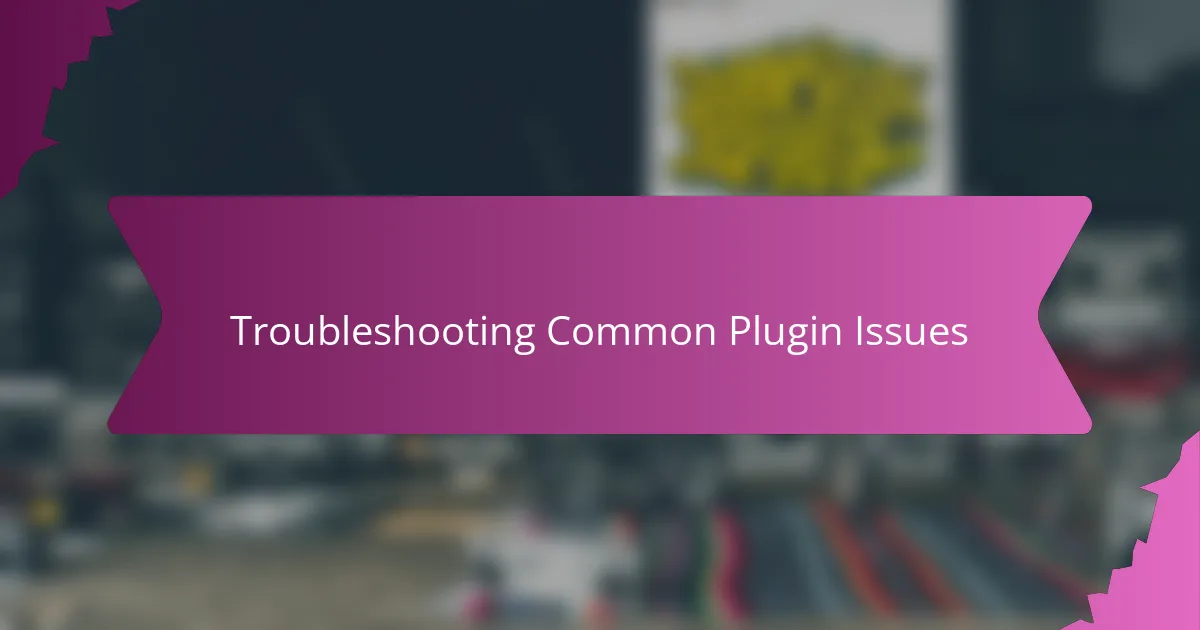
Troubleshooting Common Plugin Issues
I ran into my fair share of plugin glitches when I first started using Waves—crashes, latency spikes, or plugins just refusing to load. It can feel frustrating, but I found that keeping my software updated and double-checking compatibility with my DAW resolved most issues quickly. Have you ever lost work because a plugin froze mid-session? That sting taught me the value of saving often and running occasional plugin scans.
Sometimes, a plugin would sound off or behave strangely, making me wonder if the problem was the mix or the tool itself. That’s when I learned to bypass the plugin and listen carefully, isolating whether it was truly causing an issue. This simple step saved me hours of head-scratching and kept me from blaming myself unnecessarily.
One unexpected troubleshooting trick I stumbled upon was resetting the plugin settings to default when things got weird. It’s amazing how a quick reset can clear out hidden parameter conflicts. Have you tried this? It became my go-to move whenever I suspected something was “stuck” under the hood, and honestly, it often did the trick better than a full reinstall.
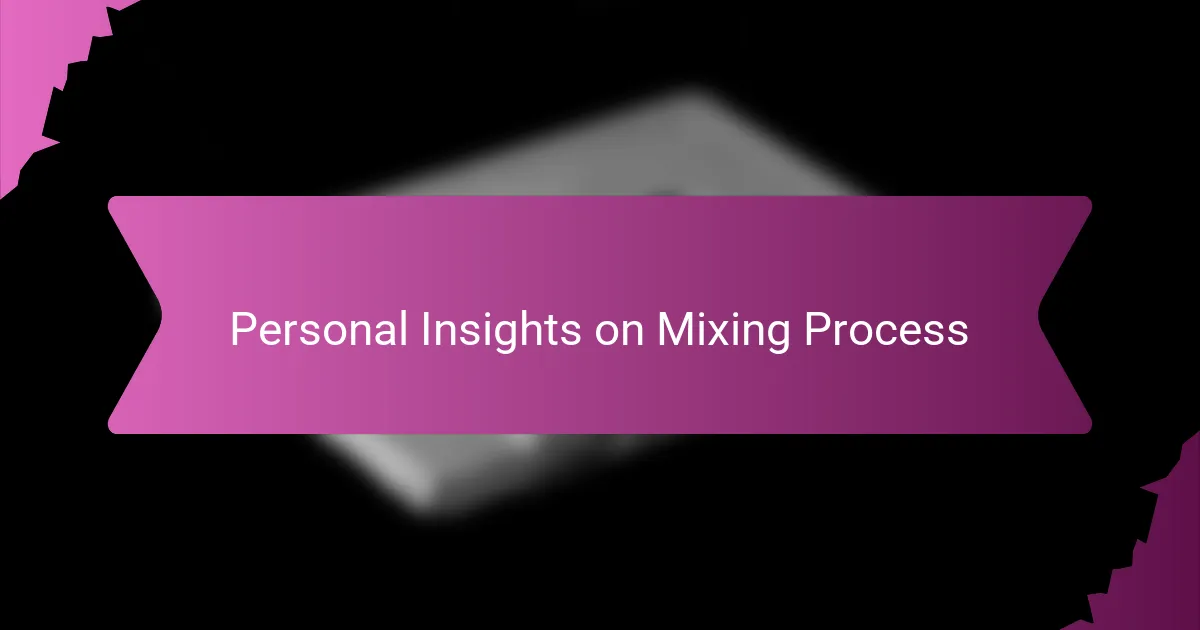
Personal Insights on Mixing Process
Mixing with Waves plugins always feels like having a creative conversation with the music itself. Sometimes, I find myself pausing to really listen, asking, “Does this sound right emotionally, or am I just chasing technical perfection?” That shift in mindset helped me loosen up and trust my instincts more during the process.
There have been moments when a tiny tweak on a single plugin—just a couple of dB here or a slight adjustment on a threshold there—completely transformed how the entire track breathed. It’s those subtle changes that remind me mixing is as much about feel as it is about precision. Have you ever experienced that almost-magical instant when everything starts clicking?
I also learned that mixing isn’t a race. Taking my time with Waves plugins, experimenting without pressure, and accepting that some decisions need to marinate actually made my mixes feel more intentional and nuanced. It’s funny how patience and a willingness to revisit tracks after breaks often reveal solutions that weren’t obvious at first glance.